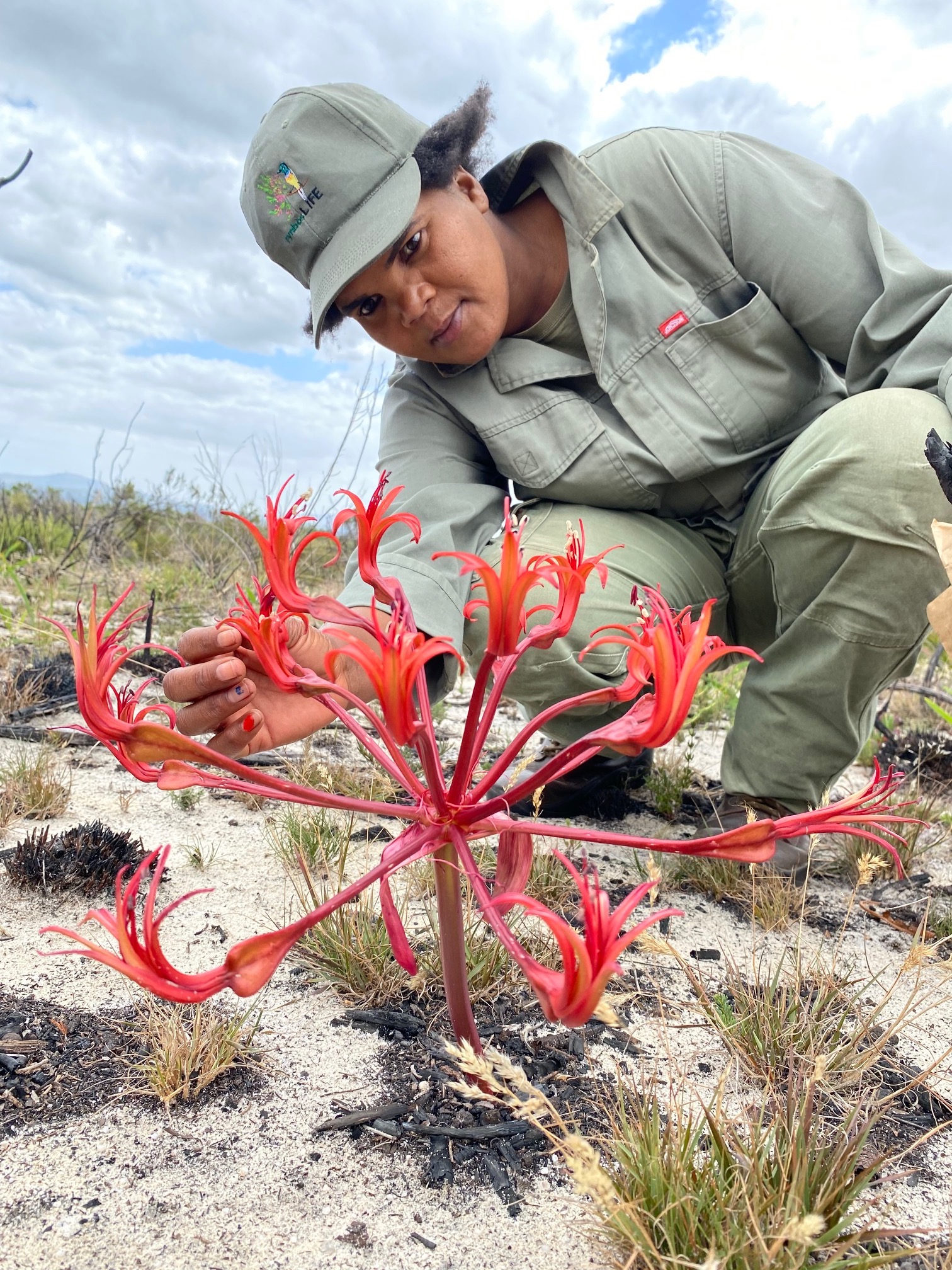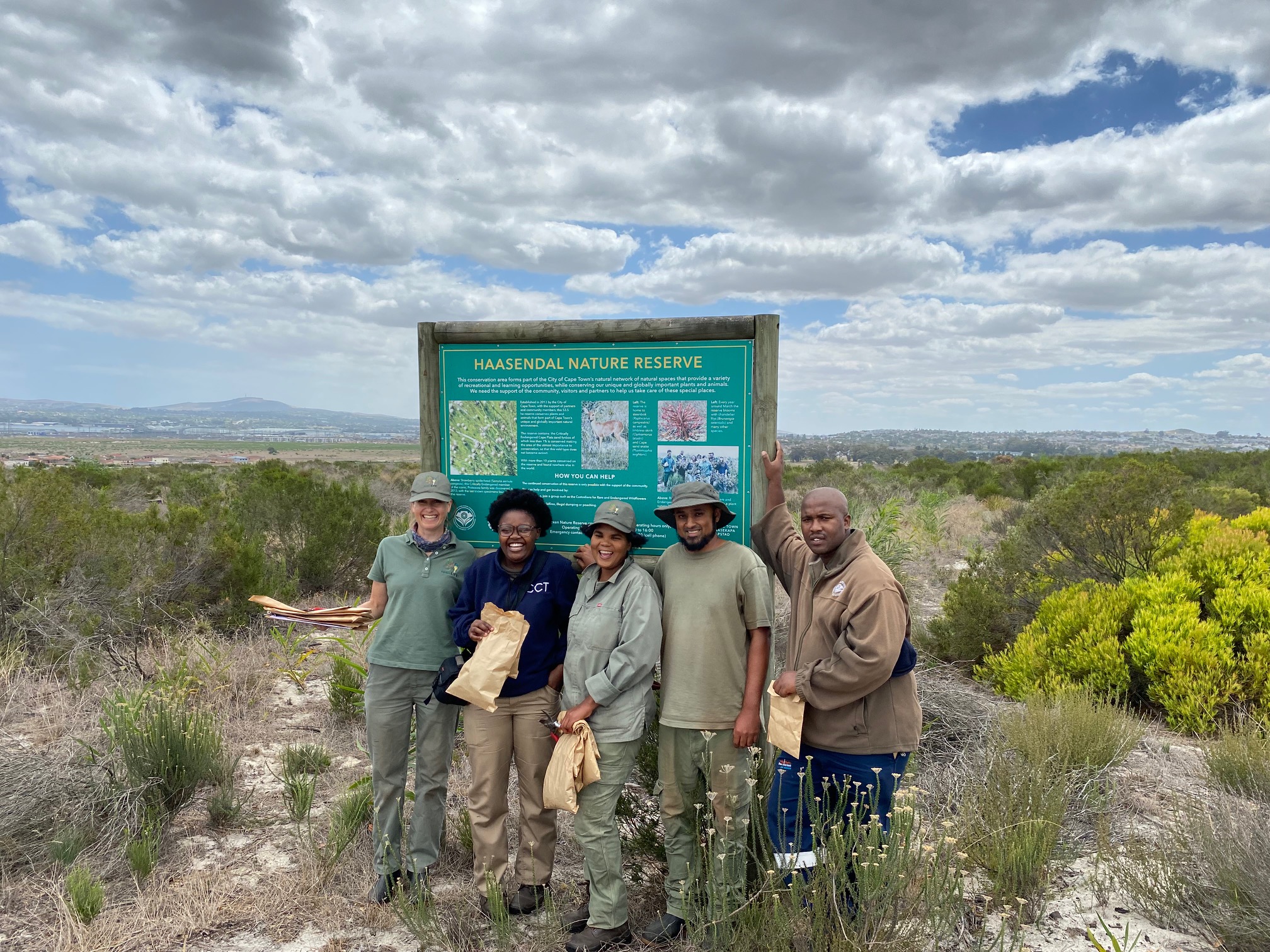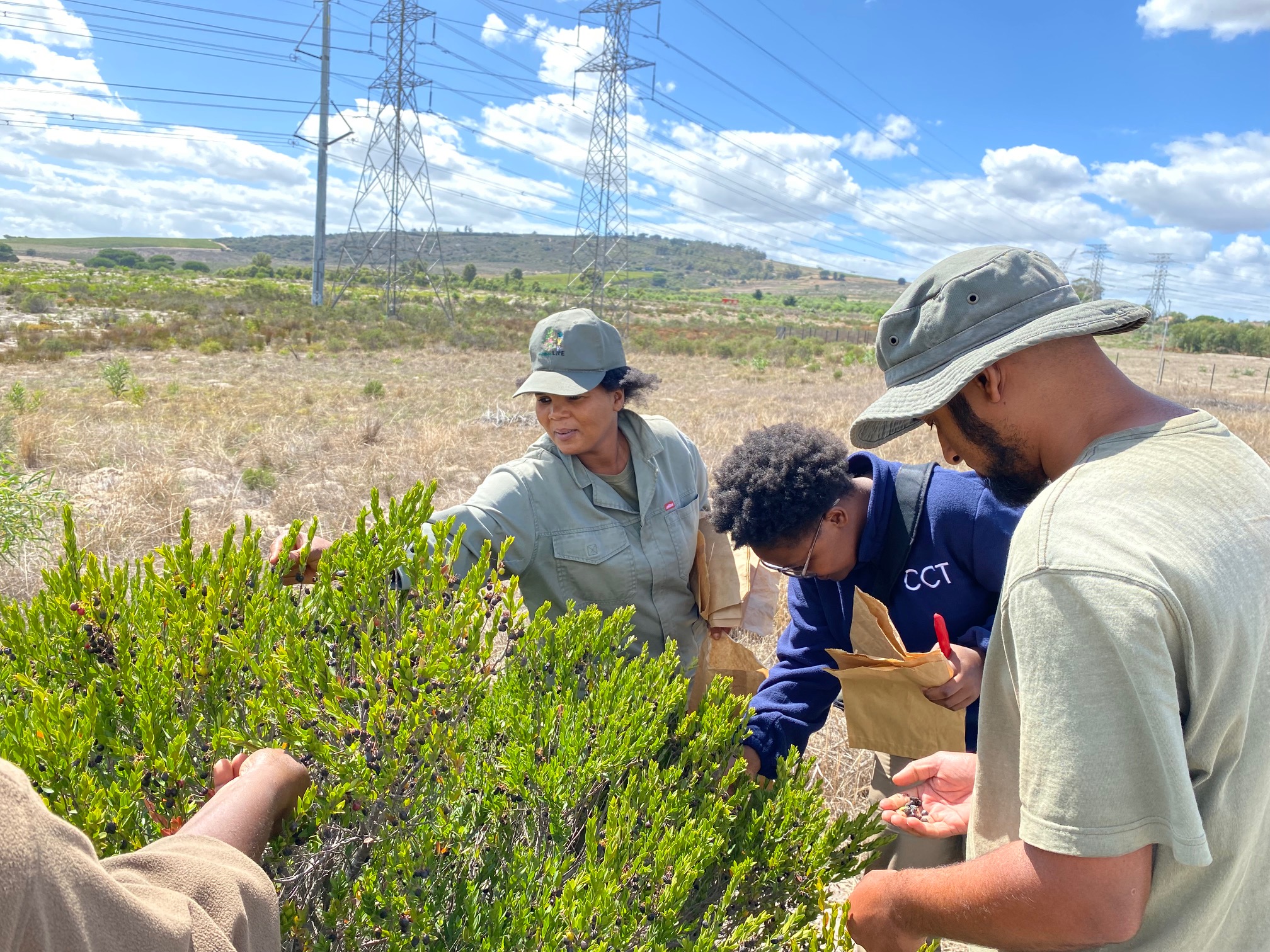Teams are working at the Haasendal Nature Reserve to preserve one of the last vestiges of Critically Endangered Cape Flats Sand Fynbos which is endemic to Cape Town – You can join in!
Kuils River, South Africa (27 July 2023) – The Haasendal Nature Reserve in Kuils River, Cape Town, is a diamond in the rough – and one of the last vestiges of Critically Endangered Cape Flats Sand Fynbos – the most diverse sand fynbos type, and one that is endemic to the City of Cape Town.
This vegetation type is severely threatened and only about 15% of it remains in the city. Of this 15%, only 1% is currently conserved.
A recent restoration effort – a partnership between the Botanical Society (BotSoc) national team and the BotSoc Kirstenbosch branch, with FynbosLIFE and other incredible partners – aims to ensure that a small part of this distinctive fynbos type is protected for years to come. Thanks to funding by BotSoc and the Rowland & Leta Hill Trust, a team of botanists and volunteers have undertaken an endeavour to reintroduce locally indigenous species into the reserve.
The Botanical Society of South Africa (BotSoc) is a civil society, non-profit organisation that started in 1913 (NPO 003-394). BotSoc has a membership of approximately 14 000 people. It offers citizen scientists, amateur nature enthusiasts, the general public and environmental experts the opportunity to know, grow, protect and enjoy South Africa’s indigenous plants, with a focus on finding solutions to biodiversity challenges across the country. While the national BotSoc offices are based in Cape Town at the Kirstenbosch National Botanical Garden, BotSoc has 16 branches spread across South Africa covering specific regions and biomes. These branches host regular events, talks, invasive clearing hacks and other opportunities for people to get involved in plant conservation. For more information, visit: www.botanicalsociety.org.za
Dr Caitlin von Witt, Botanical Ecologist at FynbosLIFE, says, “The reserve is situated in an urban area within Bottelary Hills near Kuils River, and is about 50 hectares in size. This year, we are working on 500 m². Every single remaining area of Cape Flats Sand Fynbos must be protected.”

But despite the rare vegetation it houses, Haasendal – like many other urban nature reserves – has seen better days.
Caitlin says, “This is a rapidly developing area, so there is very little natural vegetation left, and sadly most of the reserve has also been disturbed or transformed at some stage. There are old fields at the bottom and only a small area of intact vegetation at the top.”
Besides urban expansion, indigenous species are also threatened by invasive species. The prevalence of Port Jackson trees (Acacia saligna) has been a particularly formidable challenge, but recent alien clearing efforts have helped manage this problem – most of these trees have been cleared but follow ups are needed, says Caitlin.
“Verbesina encelioides, a large asteraceous herbaceous annual, has reared its head recently, and there are always new invaders to ward off on the horizon. Also on the north-western boundary, where the Bottelary Stream is, there’s a large patch of kikuyu grass in the wetter areas. And there’s potential for that to invade into the reserve from the west side as well.”
Although natural systems have the remarkable ability to restore themselves, the vegetation at Haasendal has been damaged to the point where expert intervention is needed if the fynbos is to be saved.
Caitlin explains, “Unfortunately, the area that is very degraded hasn’t passively restored from the seed bank, so what remains are very open sandy areas. As a result there isn’t a good balance of biodiversity, with an overpopulation of rodents and an abundance of mole heaps. It’s a vicious cycle, which makes it almost impossible for [natural] restoration to happen.”
These factors make their project challenging, but necessary. “Because of the disturbance in the reserve and how it has become impossible for it to restore passively, we need to undertake an active restoration project.”
Salvation through seeds
By planting local species grown from both seeds and cuttings, the conservation team is helping to boost the natural vegetation and restore it to its former glory.
Caitlin explains that the variety of species were chosen with great discernment. “We’re going to be planting some pioneers – hardy, fast-growing species – to re-introduce some relatively immediate cover. We also want to re-establish a variety of different plant growth forms and species diversity. So, species across various plant families including succulents, geophytes, annuals and longer-lived woody shrubs.”
The team also undertook broadcast seed sowing in May, and will be monitoring the area’s recovery for a year after planting, and providing support where needed. But the team is careful not to coddle the plants during the follow-up visits – after all, they must be able to withstand the Western Cape’s dry summers on their own.
She says, “With any restoration project, we don’t water the plants at all. So they rely entirely on rainwater, groundwater and condensation to survive. To promote the survival of the plants, the follow-ups will include weeding and, if the plants are getting a bit lanky, they could be trimmed down a bit.”
It takes a village…
The team of experts have put careful planning into this project, but they cannot do all the work alone. Volunteers have been invaluable in the collecting and preparing stages, and more hands are needed to help with planting and monitoring when the time comes.
Caitlin invites all botany enthusiasts to join. “By getting volunteers to join us in the field, they will really get to know the veld type and learn how important it is that we restore everything that is left.”
The transferral of valuable skills is another aim of the project, says Caitlin. Some of the staff involved have no prior experience with active restoration projects, and can learn through the process.
“We want to simplify the restoration process and teach volunteers and other staff about seed and cutting collection, smoke treatment, seed sowing, propagation, potting and planting, and also maintenance.”

Get involved
Any volunteers based in Cape Town who would like to become involved with the Haasendal restoration project, can contact Caitlin at restorehaasendal@gmail.com.


